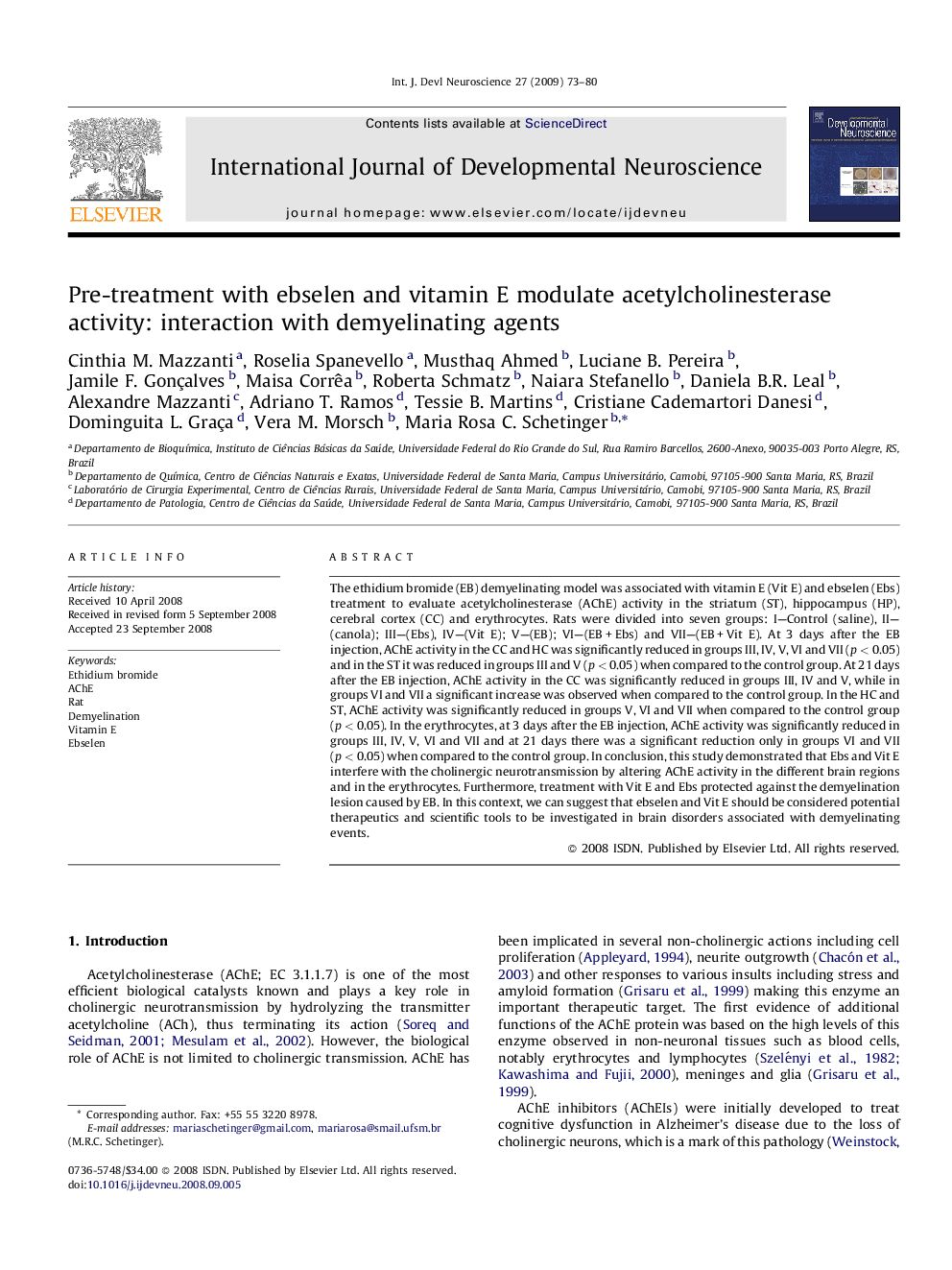| Article ID | Journal | Published Year | Pages | File Type |
|---|---|---|---|---|
| 2787014 | International Journal of Developmental Neuroscience | 2009 | 8 Pages |
The ethidium bromide (EB) demyelinating model was associated with vitamin E (Vit E) and ebselen (Ebs) treatment to evaluate acetylcholinesterase (AChE) activity in the striatum (ST), hippocampus (HP), cerebral cortex (CC) and erythrocytes. Rats were divided into seven groups: I—Control (saline), II—(canola); III—(Ebs), IV—(Vit E); V—(EB); VI—(EB + Ebs) and VII—(EB + Vit E). At 3 days after the EB injection, AChE activity in the CC and HC was significantly reduced in groups III, IV, V, VI and VII (p < 0.05) and in the ST it was reduced in groups III and V (p < 0.05) when compared to the control group. At 21 days after the EB injection, AChE activity in the CC was significantly reduced in groups III, IV and V, while in groups VI and VII a significant increase was observed when compared to the control group. In the HC and ST, AChE activity was significantly reduced in groups V, VI and VII when compared to the control group (p < 0.05). In the erythrocytes, at 3 days after the EB injection, AChE activity was significantly reduced in groups III, IV, V, VI and VII and at 21 days there was a significant reduction only in groups VI and VII (p < 0.05) when compared to the control group. In conclusion, this study demonstrated that Ebs and Vit E interfere with the cholinergic neurotransmission by altering AChE activity in the different brain regions and in the erythrocytes. Furthermore, treatment with Vit E and Ebs protected against the demyelination lesion caused by EB. In this context, we can suggest that ebselen and Vit E should be considered potential therapeutics and scientific tools to be investigated in brain disorders associated with demyelinating events.
